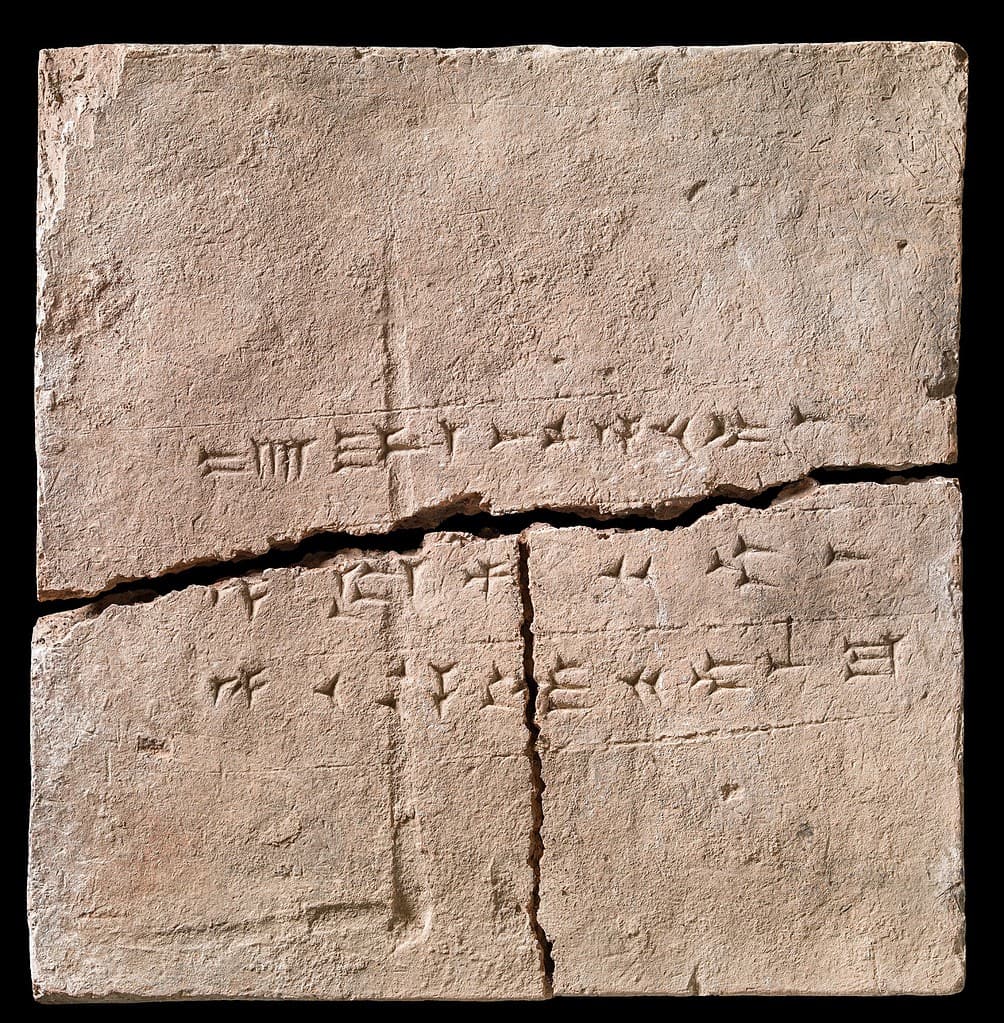Near the river Tigris, through the Syrian and Arabian Deserts, outside the ancient city of Kalhu, a brickmaker once prepared a clay brick. The brick was meant for the construction of a new palace dedicated to his king, Ashurnasirpal II (about 883–859 BCE). Little did the brickmaker know that almost 2,900 years later, this same brick would serve as a time capsule. Researchers analyzed the brick, revealing details of the flora from this area and time.

Researchers from the University of Oxford extracted ancient plant DNA from the brick. They used a novel technique that could also be applied to clay materials from different sites and time periods. The brick was precisely dated thanks to the inscription it has, stating that it’s “the property of the palace of Ashurnasirpal, king of Assyria.” Archaeologists knew when Ashurnasirpal ruled, so they could trace the date of the brick.
The brick is currently preserved at the National Museum of Denmark. Back in 2020, the museum carried out a digitalization project, which enabled researchers to obtain samples from the brick’s inner core. They then extracted ancient DNA from the samples by adopting a protocol previously used for other porous materials, such as bone.
“Because of the inscription on the brick, we can allocate the clay to a relatively specific period of time in a particular region, which means the brick serves as a biodiversity time-capsule of information regarding a single site and its surroundings,” Troels Arbøll, first author of the paper published in Nature Scientific Reports, said in a news release.
Time capsule
Ancient DNA (aDNA) refers to the study of DNA extracted from specimens that died decades, hundreds or even thousands of years ago. It was first used in 1984 with muscle tissue from an extinct species sequenced from museum specimens. Since then, aDNA has allowed to look back in time into the genomic content of extinct animal species and humans.
After sequencing the DNA, the researchers could identify 34 taxonomic groups of plants from the brick. The plant families with the most abundant sequences were Brassicaceae (cabbage) and Ericaceae (heather). Other families included Betulaceae (birch), Lauraceae (laurels), Selineae (umbellifiers), and Triticeae (cultivated grasses).
They could then compare the findings with modern-day botanical records from Iraq and Assyrian plant descriptions. The brick was likely made of mud collected near the Tigris River mixed with material such as chaff, the researchers said, and then shaped in mold. The fact that it was left to dry naturally and not burnt helped to preserve the genetic material.
“We were absolutely thrilled to discover that ancient DNA, effectively protected from contamination inside a mass of clay, can successfully be extracted from a 2,900-year-old brick. This research project is a perfect example of the importance of interdisciplinary collaboration in science,” Sophie Lund Rasmussen, study author, said in a news release.
The study is important for two reseasons. First, it reveals insights into this specific brick and construction techniques at the time. Secondly, it serves as a proof of concept of a method that could be applied to other archaeological sources of clay. Essentially, researchers could apply the same approach to bricks from different times and places to identify flora and fauna. Clay materials are almost always present in archaeological sites and they can often be dated with precision.
Piecing together archaeological information is never easy. In addition to established methods, researchers are deploying modern tools to better understand what life was like for this ancient people. Clues like this one offer a new way to study these ancient populations.






